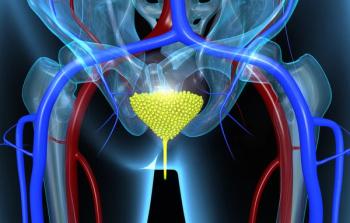
Urothelial Cancer Shows Familial Clustering Independent of Smoking Status
A study found familial clustering of urothelial cancers, with increased risk of bladder cancer and others, in first- and second-degree relatives of these patients.
A large case-control study found familial clustering of urothelial cancers, with increased risk of bladder cancer and several other malignancies in first- and second-degree relatives of individuals with urothelial carcinoma. The relationships were independent of smoking status.
“Studies that examine familial aggregation of bladder cancer have suggested that there is a strong familial component to bladder cancer,” wrote study authors led by Christopher Martin, MD, of the University of Utah in Salt Lake City. “However, due to limitations with cohort selection and the failure to adjust for smoking status, these findings are less compelling and the causal factors driving those cancer cluster patterns remain unclear.”
To correct some of those issues, the researchers conducted a case-control study using the Utah Population Database and the Utah Cancer Registry. They included 229,251 relatives of individuals with urothelial carcinoma, and 1,197,552 relatives of matched control subjects, and included a secondary analysis that removed families with elevated levels of smoking-related cancers. The results were
First-degree relatives of bladder cancer patients had an increased risk of any cancer diagnosis, with a hazard ratio (HR) of 1.06 (95% CI, 1.03–1.09; P < .001). Second-degree relatives also had an increased risk, with an HR of 1.04 (95% CI, 1.02–1.07; P = .001). As the investigators expected, there was also a significantly increased risk specifically for urothelial cancer, with an HR in first-degree relatives of 1.73 (95% CI, 1.50–1.99; P < .001). In second-degree relatives, the HR was 1.35 (95% CI, 1.21–1.51; P < .001). These analyses were also run excluding families with high rates of smoking-related cancers, and though this “slightly attenuated” the risks it did not eliminate them.
Site-specific analyses found increased risks in relatives of urothelial carcinoma patients for bladder cancer, with an HR of 1.69 (95% CI, 1.47–1.95; P < .001); kidney cancer, with an HR of 1.30 (95% CI, 1.08–1.57; P = .006); lung cancer, with an HR of 1.34 (95% CI, 1.19–1.51; P < .001); and cervical cancer, with an HR of 1.25 (95% CI, 1.06–1.49; P = .01). Removing the families with high rates of smoking-related cancers again did not eliminate these relationships.
“Our findings suggest that familial clustering of cancers in relatives of case subjects with urothelial cancer have genetic or environmental roots independent of smoking-related behaviors,” the authors concluded. “Future studies should work to identify whether genetic mechanisms underlie these cancer patterns as well as determining if these risks are specific to lower tract cancer exclusively.”
Newsletter
Stay up to date on recent advances in the multidisciplinary approach to cancer.






















































































